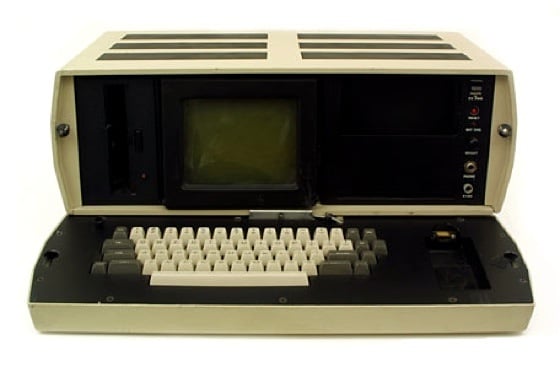Original URL: https://www.theregister.com/2011/04/04/osborne_1_30_years_old/
The Osborne 1: 30 years old this month
We remember the first commercial portable PC
Posted in Personal Tech, 4th April 2011 07:00 GMT
The Osborne 1, the world's first commercially produced computer designed to be portable, is 30 years old this month.
Adam Osborne, founder of the Osborne Computer Corporation, introduced the 11kg machine in April 1981, though it didn't go into mass production until June 1981.
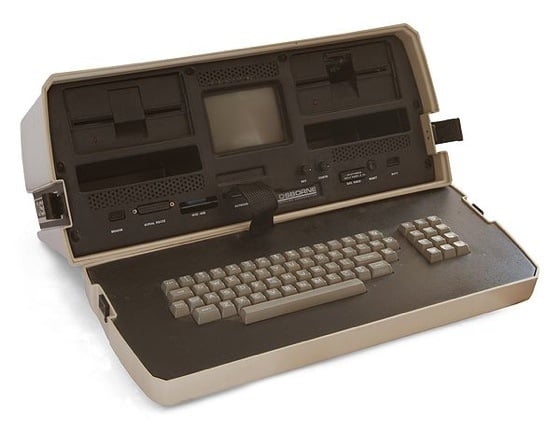
The Osborne 1
Source: Wikipedia
It was not the first machine of its kind, though it was the first portable machine people could buy. Five years previously, technologist Alan Kay had conceived - and colleagues Doug Fairbairn, Adele Goldberg and Larry Tesler then built - a portable computing prototype called the NoteTaker. The device was created at Xerox's technology hothouse, the Palo Alto Research Centre. Fairbairn and co. went on to construct nine further prototypes.
Such is the strong resemblance between his later machine and the NoteTaker, it's hard to conclude that Osborne hadn't seen it. If not, his designer, Lee Felsenstein, may well have done.
Both Osborne and Felsenstein were early members of the Homebrew Computer Club, a band of hobbyists founded in 1975. The HCC attracted a host of Silicon Valley technology fans, many of whom would become major players in the industry, Apple founders Steve Jobs and Steve Wozniak among them.
Through the HCC, Felsenstein and Osborne were well placed to hear about the likes of the NoteTaker.
In any case, whoever attempted to build a portable computer in the late 1970s would have produced something a lot like the NoteTaker.
Unpacking the portable
Designed to fit in the space under an airline passenger seat, the Osborne 1 was built out of tough ABS plastic which held its two 5.25in floppy disk drives - each mounted above a disk storage shelf - and a 5in, 52-character by 24-line CRT display, all revealed when the lid was opened.
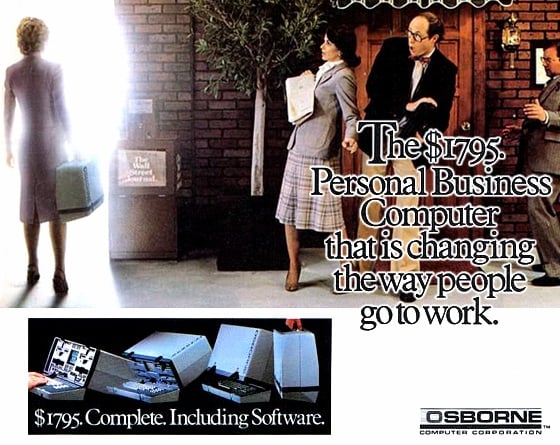
The 69-key keyboard was built into the lid, which could be unlatched. The keyboard connected to the main unit over a curly phone cable.
Beneath the two drives and the screen were the Osborne 1's ports: an IEEE 488 parallel port and an RS-232 serial connector. Behind all this was the motherboard and integrated mains-fed power transformer.
With no battery on board, the Osborne was a computer you took to work rather than one that allowed to you work anywhere.
The Osborne 1 ran the CP/M 2.2 operating system on a 4MHz Zilog Z80 processor. It had 64KB of memory, considerably more than most home computers of the time.
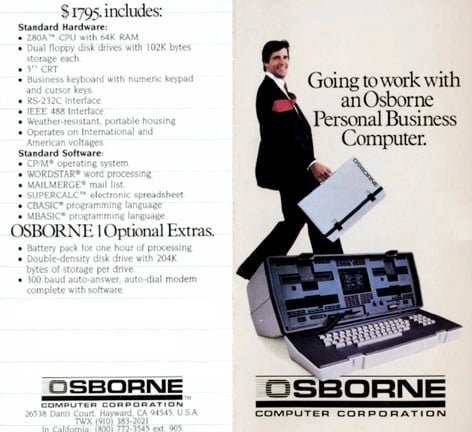
Priced at a hefty $1795 then - the equivalent of $4349 (£2669) now, thanks to inflation - the Osborne 1 packed an impressive software bundle, including Microsoft's Basic interpreter, Ashton-Tate's dBase II database, sales ledger apps from PeachTree, Sorcim's SuperCalc spreadsheet and MicroPro's WordStar.
It wasn't just a business machine: Osborne also chucked in a copy of Colossal Cave and Infocom adventure Deadline.
Selling the Osborne 1
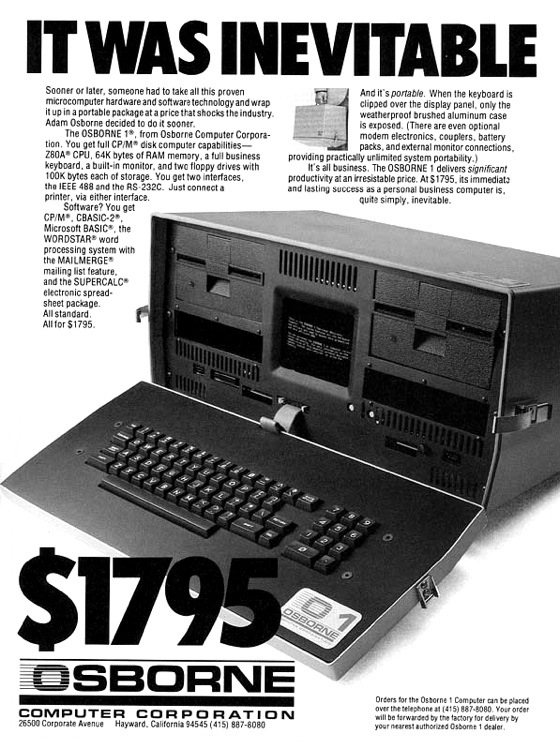
Foxed by Vixen
Games and applications helped, but it was its portability that sold the Osborne 1. The machine had racked up sales of 11,000 units by the end of 1981.
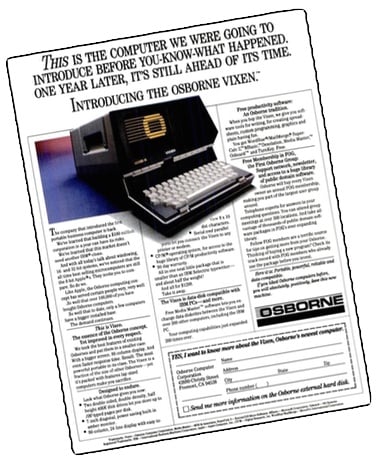
If Osborne was the first company to develop a portable computer, it was also the first technology business - the first to lend its name to the phenomenon, at least - to accidentally commit suicide by announcing new products too soon.
Tell punters there's something much better just around the corner and they'll stop buying the current model, killing your company - a situation now called the Osborne Effect.
Or so the folklore goes. Osborne announced the follow-up to the Osborne 1, the Osborne Executive, in late 1982, but it didn't ship until May 1983. It had a bigger, 7in screen than its predecessor, but also an even bigger price: $2495. It was too much - the Executive did not sell well.
That didn't matter too much because the Osborne 1 was still selling well. Until Osborne announced the Vixen - aka the Osborne 4 - which steered potential buyers away from the Osborne. Demand plunged and even massive price cuts - the machine was pitched at just $999 in August 1983 - couldn't revive it.
Osborne Computer Company was declared bankrupt in September 1983. Osborne himself was ousted, but the firm lived protected from creditors by a court order. It finally showed off the Vixen in October 1984. It went on sale the following year, but by then World+Dog wanted IBM PC compatibles, and the Vixen wasn't. OCC closed down later that year. Osborne himself died in 2003. ®
Thanks to the many Osborne 1 and vintage computing fans who provided the ad scans.
